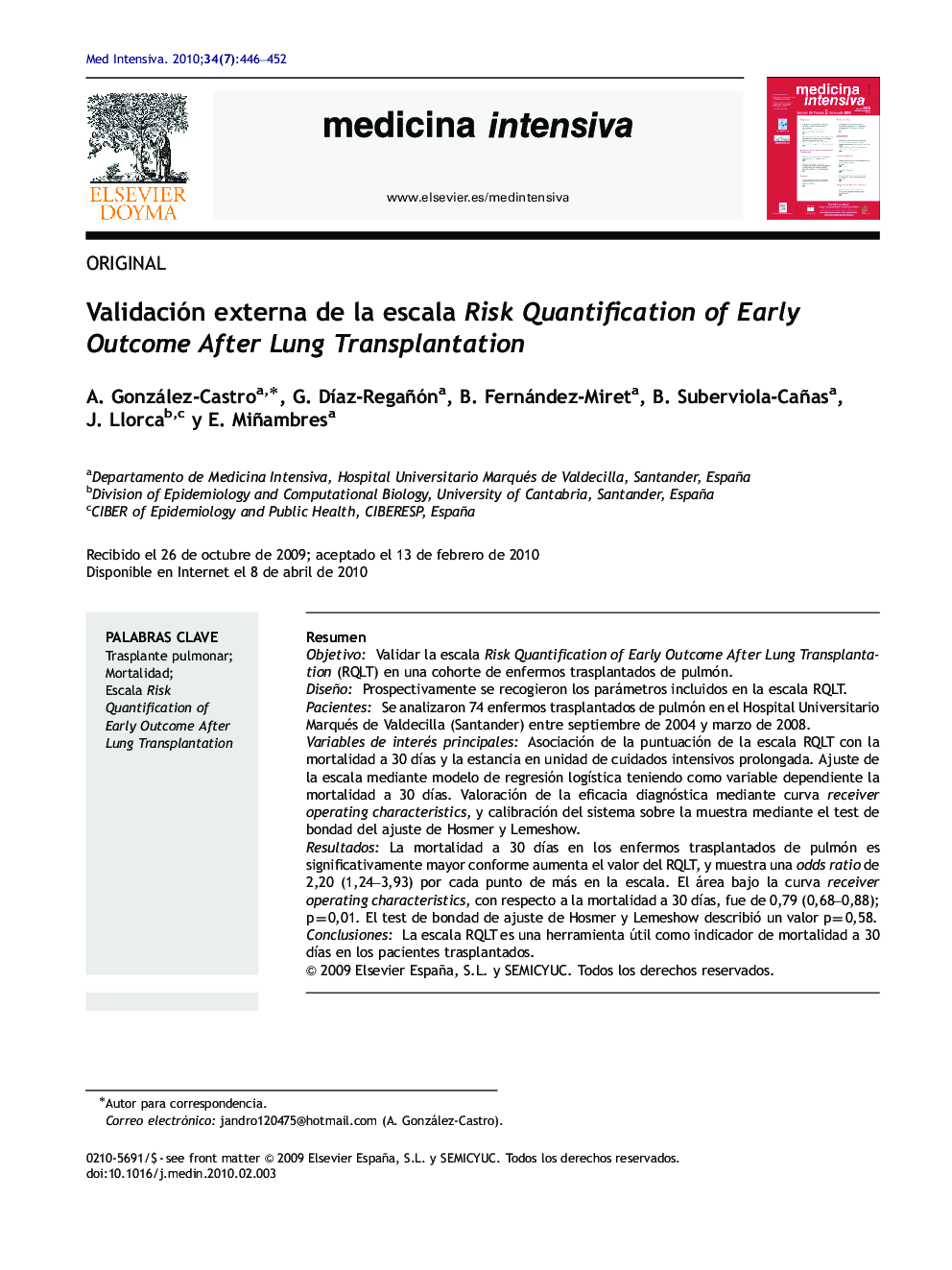| Article ID | Journal | Published Year | Pages | File Type |
|---|---|---|---|---|
| 3113586 | Medicina Intensiva | 2010 | 7 Pages |
ResumenObjetivoValidar la escala Risk Quantification of Early Outcome After Lung Transplantation (RQLT) en una cohorte de enfermos trasplantados de pulmón.DiseñoProspectivamente se recogieron los parámetros incluidos en la escala RQLT.PacientesSe analizaron 74 enfermos trasplantados de pulmón en el Hospital Universitario Marqués de Valdecilla (Santander) entre septiembre de 2004 y marzo de 2008.Variables de interés principalesAsociación de la puntuación de la escala RQLT con la mortalidad a 30 días y la estancia en unidad de cuidados intensivos prolongada. Ajuste de la escala mediante modelo de regresión logística teniendo como variable dependiente la mortalidad a 30 días. Valoración de la eficacia diagnóstica mediante curva receiver operating characteristics, y calibración del sistema sobre la muestra mediante el test de bondad del ajuste de Hosmer y Lemeshow.ResultadosLa mortalidad a 30 días en los enfermos trasplantados de pulmón es significativamente mayor conforme aumenta el valor del RQLT, y muestra una odds ratio de 2,20 (1,24–3,93) por cada punto de más en la escala. El área bajo la curva receiver operating characteristics, con respecto a la mortalidad a 30 días, fue de 0,79 (0,68–0,88); p=0,01. El test de bondad de ajuste de Hosmer y Lemeshow describió un valor p=0,58.ConclusionesLa escala RQLT es una herramienta útil como indicador de mortalidad a 30 días en los pacientes trasplantados.
ObjectiveTo validate the “Risk Quantification of Early Outcome After Lung Transplantation” (RQLT) scale in a cohort of lung transplantation patients.DesignThe parameters included in the RQLT scale were recorded prospectively.PatientA total of 74 lung transplant patients in the University Hospital Marquis of Valdecilla (Santander) were analyzed between September 2004 and March 2008.Main variables of interestThis was the association of the score on the RQLT scale with mortality at 30 days and prolonged ICU stay. The dependent variable of mortality at 30 days was adjustment of scale using the logistic regression model. Diagnostic efficacy was evaluated using the ROC curve and calibration of the system on the sample with the Hosmer and Lemeshow goodness of fit test.ResultsThe 30-day mortality in lung transplant patients increases significantly as the RQLT score increases, with an odds ratio (OR) of 2.20 (1.24–3.93) for each point increase on the RQLT scale. The area under the ROC curve for 30-day mortality was 0.79 (0.68–0.88; P=0.01). The Hosmer and Lemeshow goodness of fit test described a value p=0.58.ConclusionsThe RQLT scale is a useful tool as an indicator of 30-day mortality in transplant patients.
